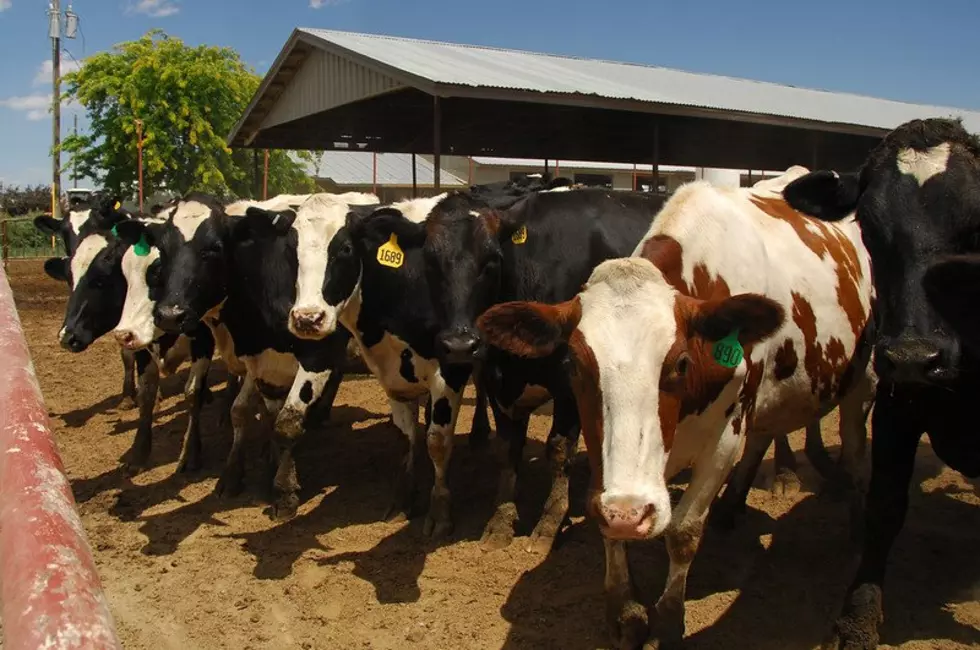
Idaho Tries Cover Crops in Corn
University of Idaho Extension Educator Steven Hines believes he’s found an effective way for farmers who interplant cover crops between corn rows to significantly boost forage production.
Prior to his research this season, Hines’ method of applying cover crop seeds in inter-cropping studies was to broadcast them onto the soil surface, which resulted in relatively poor germination. He chose to research an alternative based on a conversation last winter with a group of soil health-minded Magic Valley farmers.
“We were talking about some of the challenges of getting cover crops established when you broadcast on the ground and don’t have a way to get it into the soil,” said Hines, who is based in Jerome County. “The question two or three of the producers I was talking with came up with was, ‘What if you just ran a grain drill over the corn when it was fairly small?’”
The growers feared the drill would damage cornstalks, outweighing any improvements in cover crop germination. Based on his trial at the U of I Kimberly Research and Extension Center, Hines is already confident that drilling cover crops is worth the effort and needn’t damage much corn.
“I predict there will be no significant difference in corn yield with drilling because there’s not enough plant damage,” Hines said. “I would not hesitate to recommend inter-seeding and drilling a cover crop.”
However, he predicts he’ll quadruple cover crop yields in his project’s drilling scenario compared with broadcasting cover crop seeds.
“I’m really thrilled with the drilled cover crop,” Hines said. “There is some cover crop coming where it was broadcast but nothing like where it was drilled.”
Several growers in Magic Valley have been exploring inter-planting corn and cover crops as a way to provide their cattle with fall forage after taking a corn harvest. In prior inter-cropping research, Hines found that broadcasting cover crops between widely spaced corn rows provided extra forage without adversely affecting corn yields. In fact, the presence of cover crops actually boosted corn yields when corn rows were spaced 44 inches apart.
Interplanting cover crops appears to be the answer for southern Idaho farmers who haven’t been able to find a short-season crop capable of producing much forage when planted just after grain harvest.
“By inter-seeding you get that forage up and going,” Hines said. “The corn grows over the top of it, so it slows that cover crop down until it’s harvested off. The sunlight gets back to the cover crop, and by a couple of irrigations you’ve got forage ready to go for the cattle.”
Hines planted corn for this season’s inter-cropping experiment on May 23, following with cover crop seed on June 15 at the V3 stage. By that date, corn had emerged but the growth point of plants — a sensitive area from which new cells are developed and elongate — was not yet pushed above the soi surface.
Hines planted scenarios with corn and no cover crops, corn and cover crops broadcast in between rows and corn and cover crops drilled between the rows. Rows were spaced either 30 inches or 60 inches apart — his drill was unable to accommodate the 44-inch spacing that produced the best results in prior research regarding corn yields.
Hines used a three-point drill, which attaches to a tractor’s three-point and is lifted so only the tire that engages the drill mechanism touches the ground. He made certain that tire passed between corn rows. It’s critical for success that the tires of a drill don’t run over corn. A commercial interseeder drill is ideal, but Hines was also interested in finding ways to interseed cover crops using equipment most growers already have.
Another benefit of drilling was that it allowed Hines to include larger seeds in his cover crop mix. Large seeds, such as peas, don’t germinate well when broadcast onto fields.
“There are very few peas that are coming up in the broadcast plot, but in the drilled plot it’s a nice stand of peas like everything else,” Hines said.
His cover crop blend also includes clover and annual rye grass, which can produce additional biomass after winter for spring grazing. Furthermore, cover crops provide winter cover, trapping snow for moisture and preventing wind erosion.
“I really see the producer who would adopt this is somebody who is looking for additional forage or someone who is looking for soil-health benefits,” Hines said.
Source: University of Idaho Extension
Classic Cars You Could See at the 2023 Richland Cruizin' Car Show
More From PNW Ag Network









